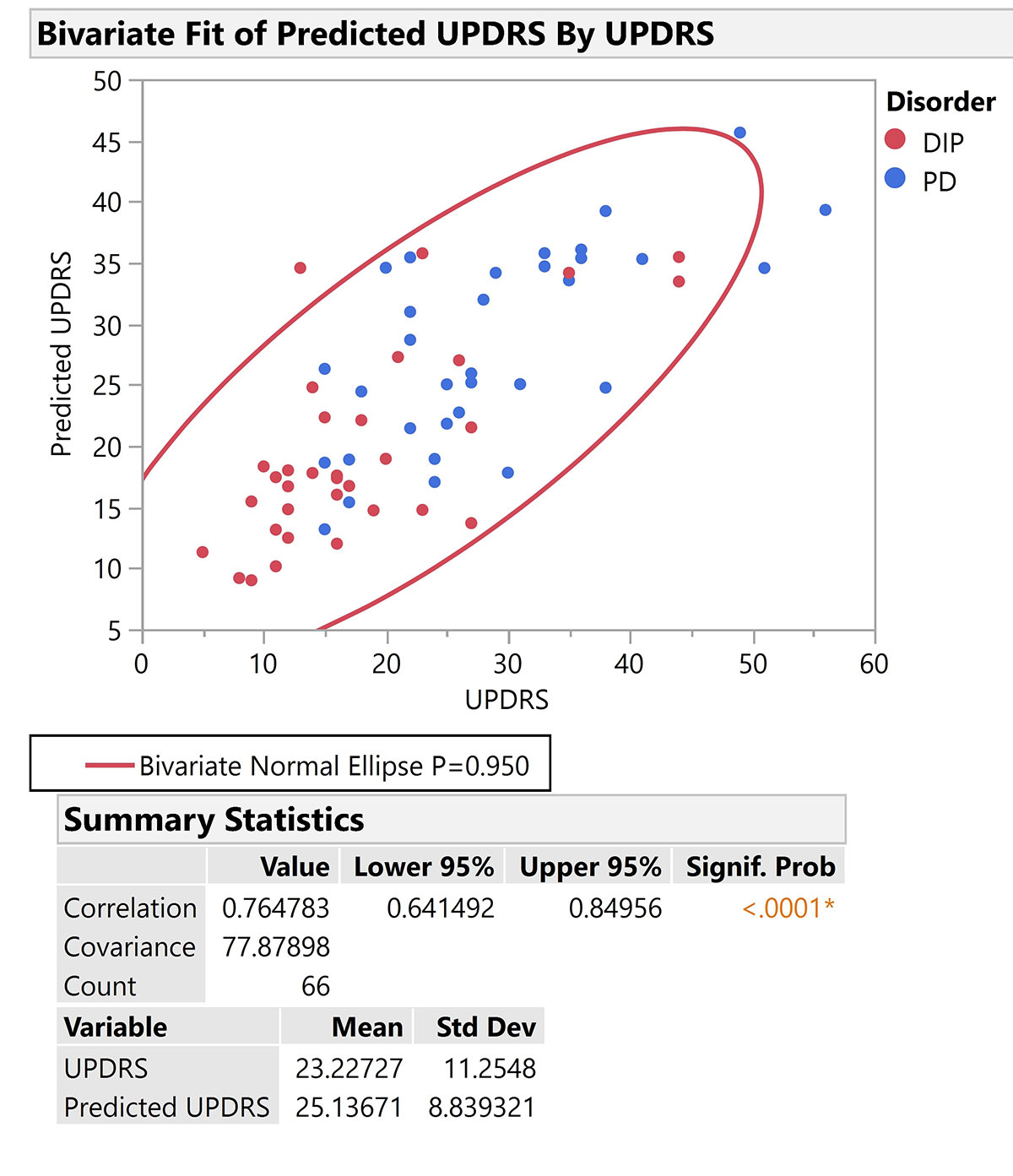Session Information
Date: Tuesday, September 24, 2019
Session Title: Rating Scales
Session Time: 1:45pm-3:15pm
Location: Les Muses Terrace, Level 3
Objective: To assess the feasibility of a smartphone-based application for performing a motor test that will provide an accurate UPDRS score.
Background: Parkinson’s Disease (PD) patients suffer from gait and other motor disturbances. Unified Parkinson’s Disease Rating Scale (UPDRS) is used in order to monitor the progression of the disease and evaluate the effectiveness of different treatments. The motor subscale of the UPDRS (mUPDRS) consists of several sub-items, each represents one core feature of PD. Each item of the mUPDRS is subjectively interpreted by the rater, leading to inter-rater variability. In addition, performing the UPDRS is time consuming.
Method: Two groups of patients were evaluated with the mUPDRS by a single rater and by Timed-up-and-go test (TUG) while a smartphone is attached to the chest. Gait was recorded by EncephaLog, an application using smartphone’s integral accelerometers and gyros for capturing the subject’s trajectory. The raw data was sent to a server where several gait biomarkers were extracted. The gait parameters and the human rater results were fed into an artificial-neural-network (ANN) predictive model.
Results: 33 patients with PD (21 males and 12 females, age 66.4±8.4, mUPDRS total score 28.6±10.3) were evaluated along with 33 psychiatric patients with Drug Induced Parkinsonism (DIP) (20 males and 13 females, age 43.6±11.5, mUPDRS total score 28.6±10.3). EncephaLog outputs included Total TUG, stand-up, sit-down and rotation times, medio-lateral-sway, anterior-posterior-sway, and steps-count. Two thirds (44) of the samples were randomly chosen to train the ANN, and the validation was done on the remaining third (22) of the samples. A high correlation (r=0.76, p<0.0001) was found between the human rater score and ANN mUPDRS prediction (x and y axes respectively in figure1) . These results were obtained regardless of the training\validation groups chosen.
Conclusion: EncephaLog was able to grade UPDRS in PD and DIP with acceptable accuracy. This accuracy was obtained by extracting biomarkers only from TUG, meaning that most of the UPDRS components are reflected by this test. Obtaining an automatic “UPDRS-meter” is desirable as it can save physician’s time, reduce inter-rater variability, and allow the test to be performed remotely.
To cite this abstract in AMA style:
Z. Yekutieli, S. Baer-Hassin, V. Livneh, T. Fay-Karmon, S. Israeli-Korn, G. Yahalom. “UPDRS-meter” – a digital and automatic UPDRS scoring application [abstract]. Mov Disord. 2019; 34 (suppl 2). https://www.mdsabstracts.org/abstract/updrs-meter-a-digital-and-automatic-updrs-scoring-application/. Accessed April 3, 2025.« Back to 2019 International Congress
MDS Abstracts - https://www.mdsabstracts.org/abstract/updrs-meter-a-digital-and-automatic-updrs-scoring-application/

